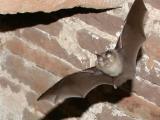Sep 24, 2012 (CIDRAP News) – Reports of a novel coronavirus linked to two severe illnesses with Saudi Arabian connections put the public health world on alert yesterday and conjured up memories of SARS (severe acute respiratory syndrome), a coronavirus infection that killed close to 800 people in 2002 and 2003.
One of the cases is in a 49-year-old Qatari man who had recently traveled to Saudi Arabia and is now being treated in London, the World Health Organization (WHO) said in a statement yesterday.
The other illness was in a 60-year-old Saudi Arabian man who died in July, according to the WHO and the UK Health Protection Agency (HPA). Both patients were said to have pneumonia associated with renal failure.
Sequencing of the viruses from the two cases shows they are 99.5% similar, the WHO said. The new virus "is different from any that have previously been identified in humans," the UK HPA said in its statement yesterday.
A preliminary investigation has found no evidence of illness in contacts of the two cases, including healthcare workers, the HPA said.
But the agency added, "We are also aware of a small number of other cases of serious respiratory illness in the Middle East in the past three months, one of whom was treated in the UK but has since died.
"This person's illness is also being investigated, although there is no evidence at present to suggest that it is caused by the same virus or linked to the other two cases. No other confirmed cases have been identified to date in the UK."
A Sep 22 press release from the Saudi Arabian Ministry of Health mentioned three cases involving the new coronavirus, two of which were fatal. It said two of the patients are Saudi citizens and the third is "a Gulf resident in Britain," but it did not specify which patients died and it gave no other details about the cases.
The WHO had no reports of any additional suspected cases today, spokesman Gregory Hartl told CIDRAP News. "Contact investigations have begun but need time," he commented. "So far, there are no indications of any human-to-human transmission. We still need to find out how this virus transmits, from human to human or animal to human, for example."
The WHO did not recommend any travel restrictions in light of the cases. Likewise, John Watson, MB BS, head of the HPA's respiratory diseases department, said the agency was developing information and guidance for healthcare workers, but with no evidence of ongoing transmission, it was not offering advice to the public or returning travelers.
Until 2003, coronaviruses were known mainly as causes of the common cold. The SARS outbreak began in China late in 2002 and spread internationally beginning in early 2003, leading to the discovery that it was caused by a new coronavirus.
The epidemic eventually grew to 8,098 cases worldwide, of which 774 were fatal, according to WHO figures cited by the US Centers for Disease Control and Prevention (CDC). The virus never took hold in the United States, but it caused scores of cases in Canada.
The Qatari patient in London had traveled to Saudi Arabia sometime before he fell ill on Sep 3, the WHO said. He was put in intensive care in Qatar on Sep 7 and then was flown by air ambulance to London on Sep 11, where he is in a hospital intensive care unit.
The Saudi Arabian case was first reported by the treating physician, Dr. Ali Mohamed Zaki at the Virology Laboratory of Dr. Soliman Fakeeh Hospital in Jeddah, Saudi Arabia, in a statement posted Sep 20 on ProMED-mail, a reporting service of the International Society for Infectious Diseases. The HPA indicated that the case occurred in July but didn't say when the patient died.
The HPA said both patients "presented with fever, cough, shortness of breath, and breathing difficulties," adding, "At this point it is not clear whether these cases are typical of infection with this virus or whether it could be circulating more widely, but causing a milder illness, and only very rarely causing a severe illness."
The coronavirus from the Saudi man was sequenced by Ron Fouchier, PhD, at Erasmus Medical Center in the Netherlands, who determined that it was a new member of the beta group of coronaviruses and closely related to bat coronaviruses, according to Zaki's ProMED-mail post.
The HPA said the virus from the Qatari patient is "genetically the same" as the one from the Saudi man. The WHO statement said the two isolates showed "99.5% identify, with one nucleotide mismatch over the regions compared."
In an interview story today from ScienceInsider, Science magazine's news service, Fouchier offered more details.
He said the HPA sent his lab the sequence of a small piece of the London patient's virus—200 nucelotides—which turned out to match the Saudi virus, except for one nucleotide. "Of course, you need to sequence the entire genome, but based on this we can assume we're dealing with the same virus," he said.
Fouchier speculated that the virus in both cases may have come from an animal. Since the infections occurred 3 months apart, it's unlikely that one patient infected the other, he said.
He said he hopes to do research to find out if the new virus causes illness in animals, with the aim of ascertaining whether it caused the illness in the human cases.
See also:
Sep 23 WHO statement
Sep 23 UK HPA statement
HPA Q&A statement
ScienceInsider interview with Fouchier
Sep 21 CIDRAP News item on Saudi case
CDC SARS information


















